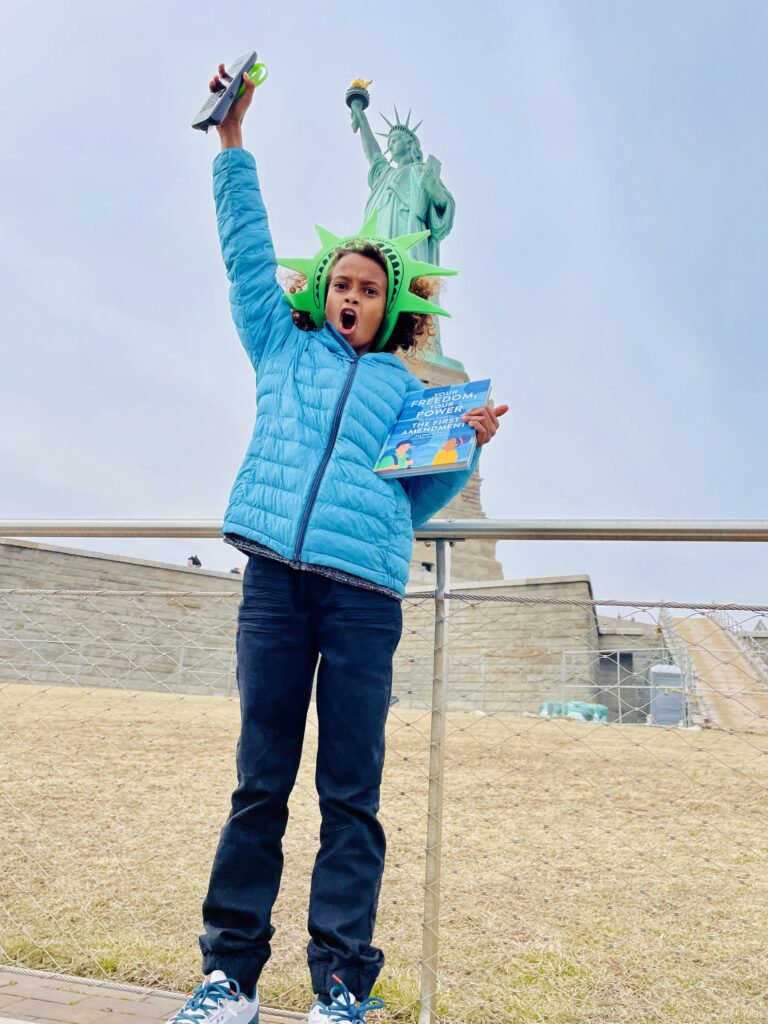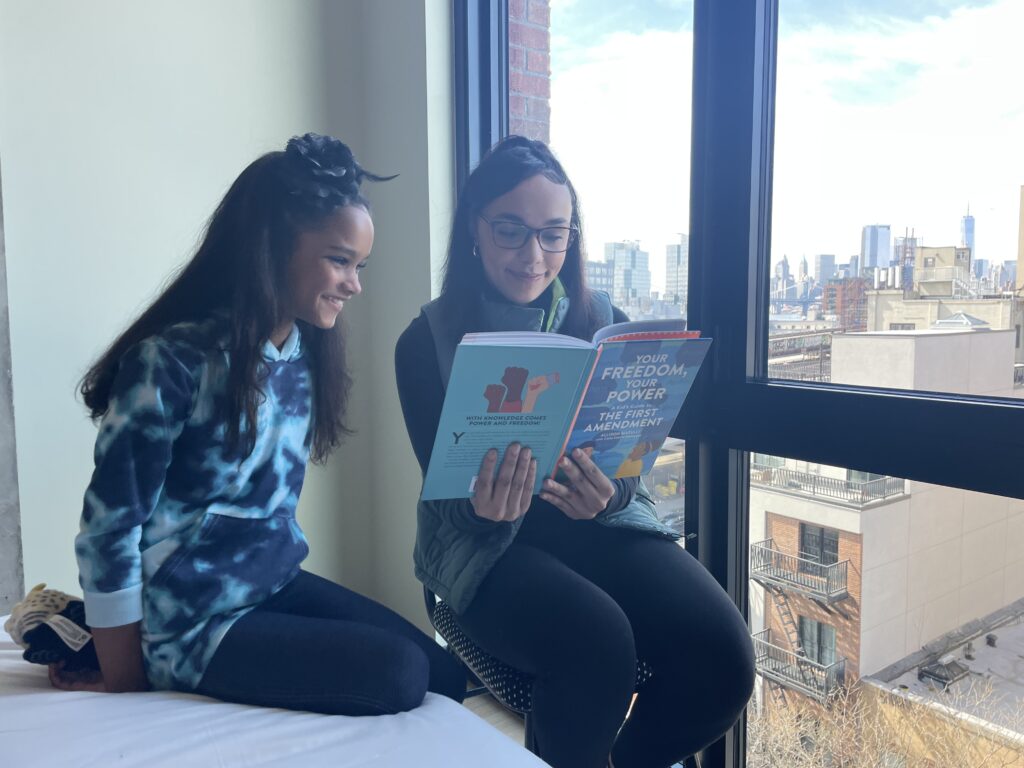But do teachers know about the historic changes in students’ first amendment rights?
When I first walked into my classroom many years ago, I was not confronted with the same level of First Amendment issues faced by teachers today. In the age of technology meets the age of COVID-19, there is a silently brewing storm. Hence, the upcoming school year will be littered with historic firsts on how administrators, teachers, students and parents battle over how kids exercise their fundamental right to free speech. Before COVID, principals were already suspending students for things they did or said on social media. Teachers were already being asked by parents to supervise student-to-student online interaction. Parents were already reporting cyberbullying on an alarmingly explosive scale. But as digital technology overtakes physical in-person learning, are teachers, principals or schools equipped to deal with the growing ways kids are speaking out online? Or, since kids are not on campus, does that ball fall squarely on parents’ shoulders?
What are the major recent changes to the standard for students’ First Amendment rights?
Guess what? Those First Amendment rights of kids have been stretched more and more to deal with what kids are saying or posting online. In June 2020, a significant expansion occurred to which every teacher and administrator should open their eyes. A Pennsylvania high school got a jaw-dropping lesson in students’ First Amendment protections this summer when the U.S. Court of Appeals for the Third Circuit granted summary judgment in favor of the student. In B.L. v. Mahanoy Area School District, the teen had posted on SnapChat “f##@ cheer,” among other heated language. The school responded by kicking her off the cheerleading team. As minors cannot bring lawsuits, with parental help, the teenager took her case to court. The Third Circuit federal court determined that school’s decision to remove her from the team violated her First Amendment rights. Basically, it all came down to where this whole SnapChat chitchat happened — OFF CAMPUS! In the tech-age, during which kids are connected to some device almost ALWAYS, that fact can be very blurry. However, the court found that fact to be an essential question — about how to differentiate between “off-campus” and “on-campus” speech.
See what happened at the Supreme Court level—-> in Your Freedom, Your Power [CLICK HERE TO ORDER].
What is this — a legal evolution?
In a word —YES! It is what I call the frontier of legal evolution. It is changing now and it will continue to change at a rate exceeding all other fields of law, as technology not only repeatedly changes, but becomes part of our social norm for children. I didn’t get a cell phone until I was a teen. Today, kids are practically born with mobile phones in their infant hands and iPads in their toddler laps. Let’s face it, digital learning is only growing, and potentially forever more, education will never be the same. More so, like it or not, kids are citizens too and they do have protections of the First Amendment.
In their eagerness or need to be seen, heard, acknowledged, and/or to feel connected, kids are online at a record pace for a record amount of time. Unfortunately, kids are, too often then not, poorly prepared to comprehend what they do virtually could impact their entire future. As kids and parents, you may find yourself wondering —do kids even have First Amendment rights? The First Amendment is as American as apple pie. It is probably the law we all know best. It makes us bold with our voices. It gives us permission to speak up and stand strong for our principle, and sometimes, for the protection of our neighbors or even strangers. That is also part of the fabric of the American spirit. We will not be silenced, regardless of what side of the coin we land on regarding any issue. But, does that slice of apple pie — flavored with a bold, daring spirit — get fed equally to our children? Are the five freedoms covered in the First Amendment even extended to children? The answer is a firm YES!
All five freedoms and rights apply to students. These include the following:
(1) freedom of religion,
(2) freedom of speech,
(3) freedom of the press,
(4) freedom to peaceably assemble, and
(5) the right to petition the government.
What does history teach us?
For decades, these freedoms have been a type of tug of war between kids and parents versus school faculty and administrators. Young people throughout history have tested how far their freedoms reach in schools throughout our nation. For this purpose, let’s stick with the freedom of speech, historically the most tested freedom of all, by both kids and adults. In American schools, this standard was first tested by a shy girl who challenged her own school back in the late 1960s. I recently interviewed Mary Beth Tinker for my book Your Freedom, Your Power, and what she had to say is powerful. As her case went all the way to the Supreme Court, it set the standard all schools have to adhere to when it comes to students’ First Amendment rights. First and foremost, the Supreme Court ruled that students not only had First Amendment rights, but their rights were still effective when they were in school.
In Tinker v. Des Moines Independent Community School District, 393 U.S. 503 (1969), Supreme Court held that for school officials to justify censoring speech, they had to prove that the conduct that would “materially and substantially interfere with the requirements of appropriate discipline in the operation of the school.” This established a clearer line in the sand. In every day language, it expanded kids’ rights to free speech. Just because a school didn’t like what a kid had to say, protest about, or wear, doesn’t mean it is not protected by their First Amendment. From that point on, schools seeking to censor students or infringe on their First Amendment right to free speech had to “be able to show that [their] action was caused by something more than a mere desire to avoid the discomfort and unpleasantness that always accompany an unpopular viewpoint.”
What does that mean for today’s teachers?
Today, kids are being exposed more and more to new methods and ways to remotely interact in the world. However, the rules, laws and responsibility that go with these new methods of connecting and communicating and not being taught. Law is woven into every aspect of life, but it is neglected by schools to prepare both teachers and kids to fully understand the legal limits when it comes how they express themselves on the growing list of digital tools (i.e. apps, devices, etc). This is especially true when we look into First Amendment rights.
If you think it was hard before to determine school hours or on campus versus off campus or after school, imagine now. Truly speaking, this is a hurricane, and given the pandemic push to virtually learn to safeguard our health, the hurricane is only growing bigger, stronger and bolder. As a Florida resident, I do not use that analogy lightly but with care and percussion. Why? The law is changing, and kids/teachers/parents/administrators are not fully keeping up with these major legal twists and turns of this silent hurricane. The most massive and eye opening change that has to do with how schools are policing kids online, which ironically, kids are forced to do right now in order to even attend school.
This school year will be the first time, teachers kickoff the school year broadcasting from their basements, living rooms or make shift home-based classrooms. It will be the first time, parents get to witness the weight of teachers’ work, planning and classroom lessons absorbing their children’s day. It will also be the first time, that teachers, parents, administrators and children are forced to deal head-on with the true power of social media and how children are increasingly expressing themselves online. Hence, this historic school year will also be the first time that demands all educators universally understand how, if and/or when the First Amendment applies to students.
How do we handle this all here and now?
The social norm for children and adult has disappeared in 2020 COVID-19 pandemic. Hence, if the true goal shared is to protect our children, as parents and teachers, there must be a willingness to work together. As a parent, my message is for parents to be diligent and attentive about their children’s online actions and interactions. The school should not be responsible keep up with your children digital footprint when they are in your care. For teachers, my message is to keep an open avenue of conversation with parents. Partner together to make sure children are where they need to be, whether virtually, socially, mentally or emotionally. Our children are facing epic challenges, and if we unite, it will make a difference. If you hear anything from another parent, be immediate and appropriate in your response. As kids are increasingly exposed to online campuses and communication practices, the adults around them have to be willing to work hard together to make sure the kids are making health decisions as they employee their First Amendment rights.
Work and wisdom,
Allison Matulli, J.D. | M.Ed. | Ed.D. Candidate | Spicy Food Affectinado | Mom of 2


